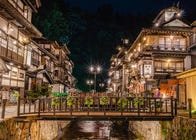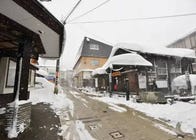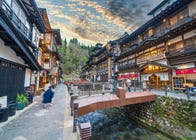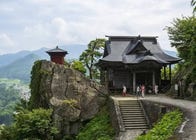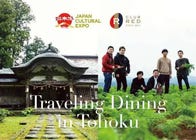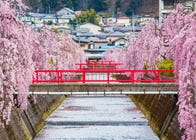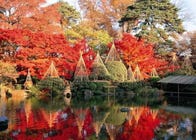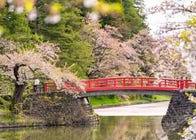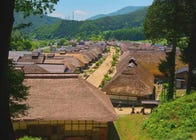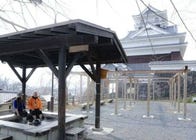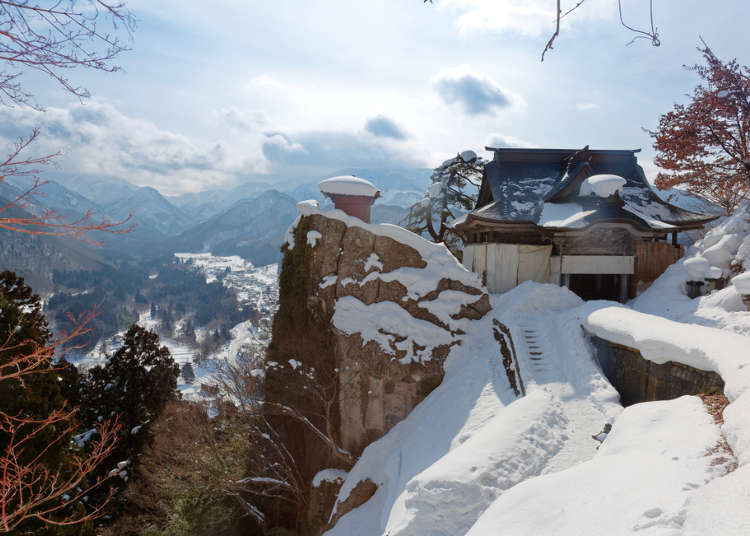
Yamagata Prefecture Guide: Destinations, Activities, Travel Advice, Shopping & More
- Written by: Steve Csorgo
Yamagata Prefecture (山形県) is located in the Tohoku region of northern Honshu along the Sea of Japan. It’s easily accessible from Tokyo via the bullet train, but remains an often-overlooked, somewhat wild region full of vast nature, stunning hot springs, unique local cuisine, and fascinating cultures.
This comprehensive guide covers everything you need to know about visiting Yamagata, including attractions, transport, food, and travel tips.
(Main image: PIXTA)
- Table of Contents
-
- Why visit Yamagata? What is so special about Yamagata?
- What should I see in Yamagata? What are Yamagata's best attractions?
- When's the best time of year to visit Yamagata?
- How do I get to Yamagata?
- Where should I stay in Yamagata?
- What should I eat in Yamagata?
- What souvenirs should I buy in Yamagata?
- Tips on visiting Yamagata
- Recommended day trips from Yamagata City
Why visit Yamagata? What is so special about Yamagata?
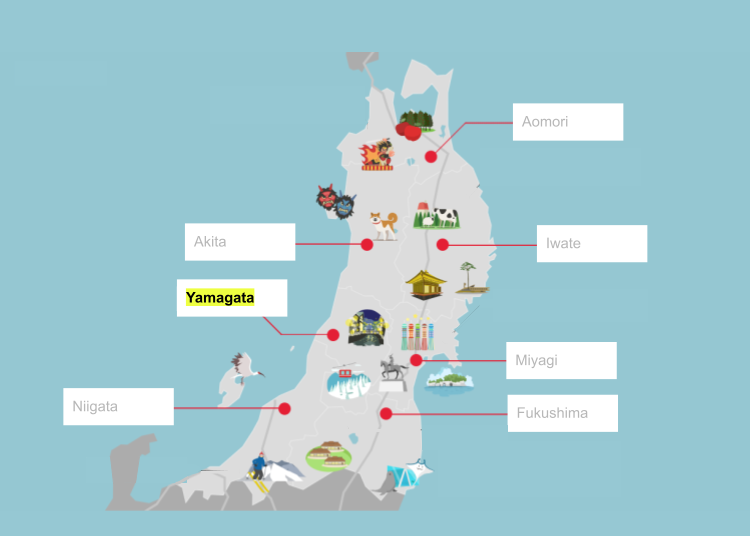
Yamagata is for adventurous travelers seeking an off-the-beaten-track destination in Japan. Its highlights include hot springs, like the otherworldly village of Ginzan Onsen, which looks straight out of a Ghibli film, and Zao Onsen, whose milky white sulfur waters are said to help heal the skin.
Yamagata is also home to numerous stunning mountains, such as Mt. Zao and the Three Mountains of Dewa, which are an important part of Japan’s ancient “mountain worship” religion.
On the Sea of Japan are picturesque coastlines and beaches, while its small cities and towns brim with culture, craftsmanship, and historical significance. Food is also a big draw, as Yamagata is a breadbasket of top-tier produce like cherries, edamame beans, wagyu beef, and seafood, which can all be enjoyed in a variety of local dishes.
How much time should I spend in Yamagata?

Yamagata has enough on offer to be deserving of a week of your itinerary, for those with time. If you’re on a tighter schedule, it would take around 3-4 days to fully experience the main sights of Zao Onsen, Ginzan Onsen, Yamadera, and Sakata/Tsuruoka.
It also depends greatly on whether you can rent a car, as public transport options in Yamagata are fairly limited compared to much of Japan, and multiple train and bus transfers may eat into your itinerary.
What should I see in Yamagata? What are Yamagata's best attractions?
Yamagata boasts a diverse range of attractions, from its lush natural landscapes to its rich cultural heritage. Visitors can explore historic temples, scenic mountains, and vibrant local festivals, immersing themselves in the prefecture's unique charm.
Ginzan Onsen
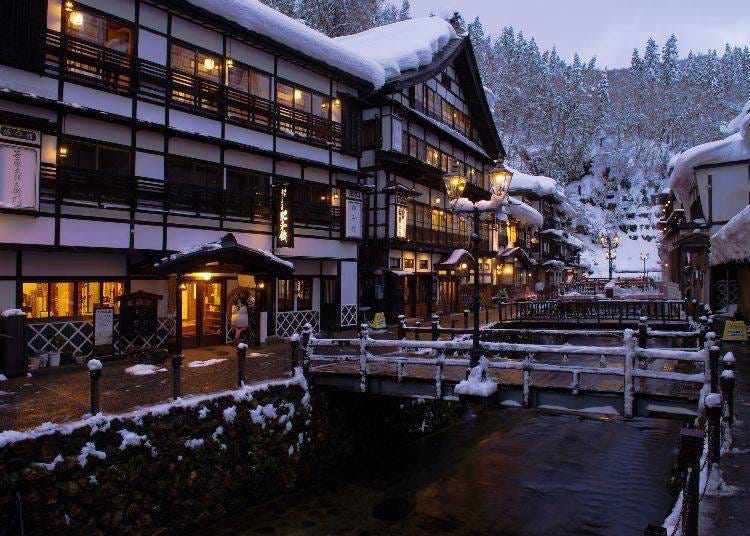
Adored for its enchanting otherworldly vibes, the hot spring town of Ginzan Onsen has become practically synonymous with Yamagata sightseeing.
Rows of charming wooden traditional “ryokan” inns and bathhouses line the Ginzan River, offering weary travelers a cozy room and hot spring bath to unwind in and let go of external stresses.
There are also day-trip bathhouses for those without the time to spend a night, as well as plenty of restaurants, cafes, and shops dotting the streets, including those selling the town’s famous “curry bread.”
-

-
Address
Yamagata Prefecture Obanazawa City Yamagata Large Ginzan Shinhata, 999-4333
View Map -
Nearest Station
Oishida Station (Ou Line / Yamagata Shinkansen)
- Phone Number 0237-28-3933
-
Address
Yamagata Prefecture Obanazawa City Yamagata Large Ginzan Shinhata, 999-4333
Zao Onsen
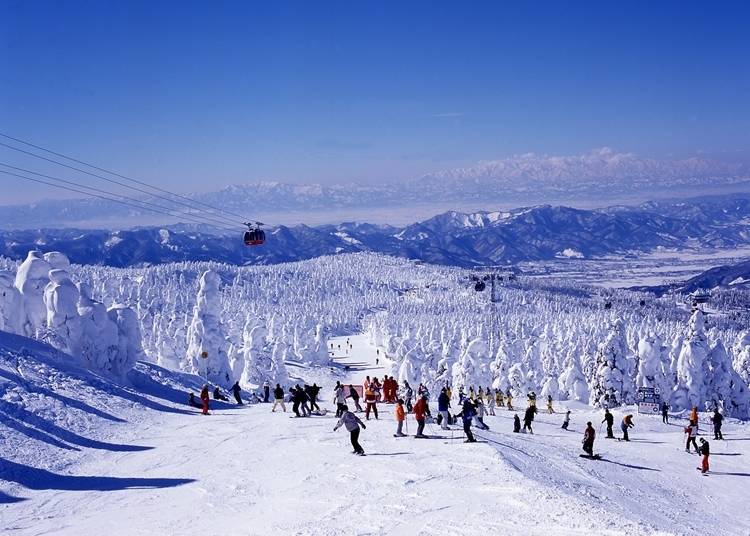
Zao Onsen is a sightseeing mecca packed with things to do. It is most famous for its hot springs, many of which have opaque milky-white waters rich in sulfur, said to be the second most acidic springs in Japan.
While giving the skin a bit of a sting, its healing benefits are undeniable, and the town’s wealth of charming accommodations promise a blissful getaway.
For the more adventurous, Zao Onsen is equally famous for its skiing. The expansive Zao Onsen Ski Resort offers 14 slopes and 12 courses for all skill levels.
Best of all, during the coldest months of January and February, the surreal “Zao snow monsters” appear, which are frozen trees blasted by the wind into bizarre shapes.
Zao Onsen also has brilliant autumn foliage, which can be enjoyed from above on the Zao Ropeway.
Yamagata City
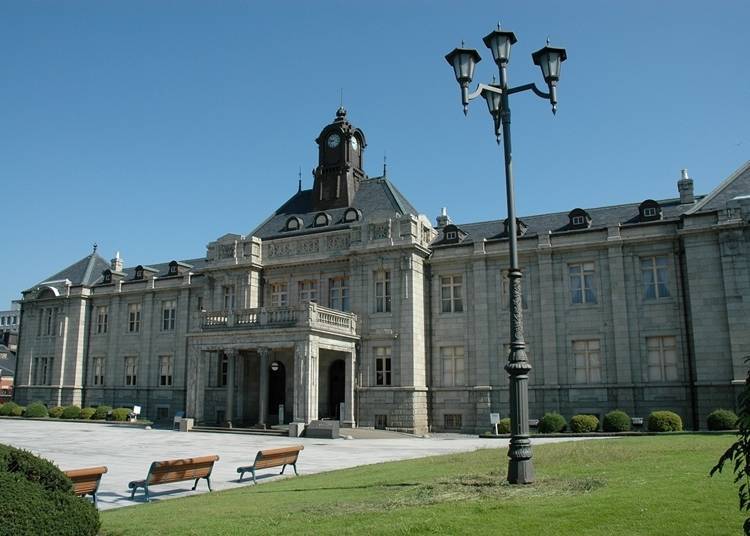
Yamagata City is the capital of Yamagata Prefecture, and the entrypoint for many travelers. Yamagata Station is a stop on the Yamagata Shinkansen bullet train, and hosts three other local train lines connecting to other parts of the prefecture.
It is a smallish city of around 250,000 residents, and is not considered a major sightseeing destination in itself, but does have several notable points of interest.
This includes the gorgeous Kajo Park, which hosts the Site of Yamagata Castle and the Old Saiseikan Hospital Building; the grand, Western-influenced Yamagata Folk Museum Bunshokan, built in 1916; as well as Yamadera on its outskirts, which is one of the most iconic Yamagata sights.
-

-
Address
3-4-51, Hatagomachi, Yamagata-shi, Yamagata, 990-0047
View Map -
Nearest Station
Yamagata Station (Ou Line / Yamagata Line / Yamagata Shinkansen)
10 minutes by bus
- Phone Number 023-635-5500
-
Address
3-4-51, Hatagomachi, Yamagata-shi, Yamagata, 990-0047
Yamadera Temple (Hojusan Risshakuji)

Yamadera is an ancient temple complex scattered over a small mountain on the outskirts of Yamagata City. The temple’s cliffside Kaisando and Nokyodo buildings are some of the most well-known icons of Yamagata and are a must-visit for any fan of Japanese history.
It takes around an hour to hike the mountain, and the trailhead is easily reached on foot from Yamadera Station, which is directly connected to Yamagata Station, making it doable for those without cars.
-

-
Address
4456-1, Yamadera, Yamagata-shi, Yamagata, 999-3301
View Map -
Nearest Station
Yamadera Station (Senzan Line)
5 minutes on foot
- Phone Number 023-695-2843
-
Address
4456-1, Yamadera, Yamagata-shi, Yamagata, 999-3301
Yonezawa

Yonezawa Station is another stop on the Yamagata Shinkansen bullet train.
For gourmands in the know, the small city is practically synonymous with Yonezawa beef, considered one of the top three beef brands in Japan alongside Kobe beef and Matsusaka beef.
Yonezawa and its surroundings are packed with restaurants serving the delicacy in a range of dishes, including steak, shabu-shabu hotpot, or hamburg.
Other attractions worth making the stop include the sizable grounds of Uesugi Shrine, which stands on the ruins of Yonezawa Castle and enshrine the famous samurai lord Uesugi Kenshi; as well as the Yonezawa City Uesugi Museum, Toko Sake Museum, and the Former Yonezawa Technical School.
Sakata

Sakata is a small city on the coast of the Sea of Japan famous for its seafood market and historical sites.
The Sakata Fish Market is a great place to see and chow down on fresh hauls from the Sea of Japan, as well as pick up some tasty local foods to bring home.
There are tours and sushi workshops letting visitors witness the frantic early-morning wholesale market, or you can indulge in hearty seafood bowls sold at astonishingly low prices at the upstairs Tobishima food hall.
On the historical side of things, Sakata is most famous for the Sankyo Soko Storehouses, which are a row of 12 wooden storehouses constructed in 1893.
Their gorgeous solemn architecture has been perfectly preserved, while the 150-year-old zelkova trees lining the cobblestone path dress them up in dazzling colors come autumn.
Some of the storehouses also host shops selling local Yamagata crafts and souvenirs, and there is also a cafe and museum.
Tsuruoka
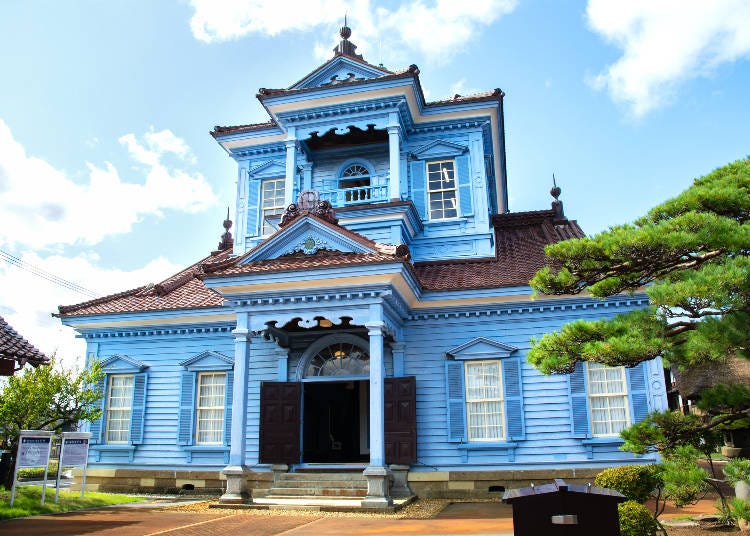
Tsuruoka is another small city near the Sea of Japan home to an incredible array of historical sites and natural beauty.
Its crowning gem is Tsuruoka Park, famed as a hotspot for cherry blossoms, and home to or within walking distance of several noteworthy historical structures like the ruins of Tsurugaoka Castle, the Western-style Taihokan building, Shonai-jinja Shrine, the Chidokan “han” school, and the dynamic Former Tsuruoka Police Station.
On its coastline is also the Kamo Aquarium, loved for its dazzling illuminated jellyfish tanks; while further inland are the three mountains of Dewa Sanzan.
Dewa Sanzan
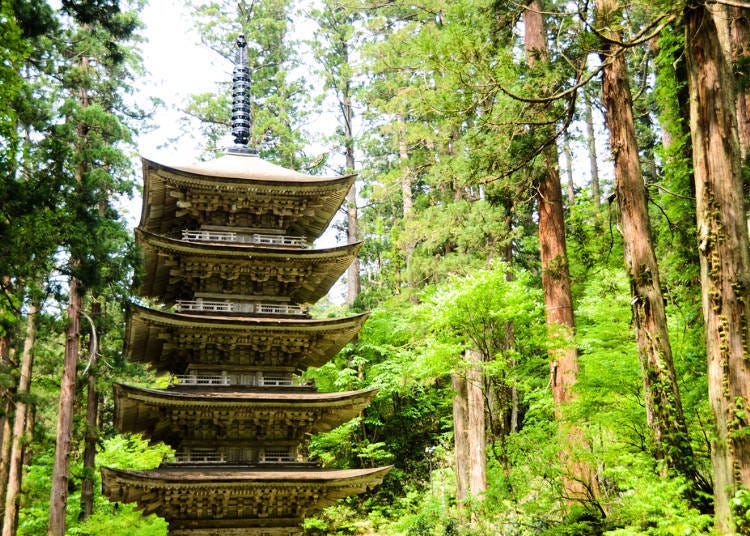
Dewa Sanzan means the “Three Mountains of Dewa” and is the collective name for Mt. Haguro, Mt. Gassan, and Mt. Yudono.
These mountains are each considered essential Yamagata sightseeing spots, and have been the site of mountain worship since ancient times.
They are all connected by ridgelines, with Mt. Gassan being the main peak at a whopping 1,984 meters, while Mt. Haguro sits to the north, and Mt. Yudono to the southwest.
Each mountain has its own unique attractions, like the “yamabushi” mountain monks clad in white training themselves at Yudonosan Shrine on Mt. Yudono, primeval beech forests and rare alpine plants on Mt. Gassan, and the ancient Five Story Pagoda on Mt. Haguro, plus plenty more.
If you’re coming to Yamagata seeking adventure, Dewa Sanzan should be at the top of your itinerary! Just keep in mind that most trails are closed for winter and even spring, so check the opening schedules in advance, and do some thorough research or get the advice of locals if possible.
-

-
Address
7, Haguromachitouge, Tsuruoka-shi, Yamagata, 997-0292
View Map -
Nearest Station
Tsuruoka Station (Uetsu Line)
40 minutes by bus
- Phone Number 0235-62-2355
-
Address
7, Haguromachitouge, Tsuruoka-shi, Yamagata, 997-0292
When's the best time of year to visit Yamagata?
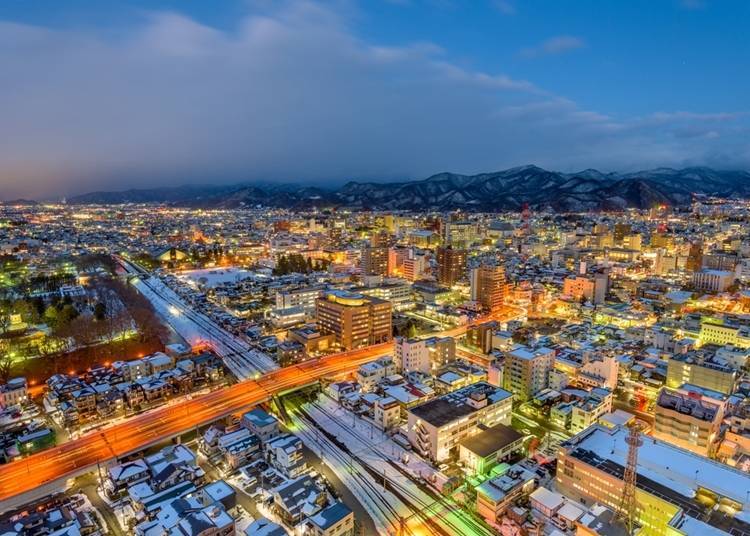
Yamagata can be visited anytime of year, but the season can have a big effect on your sightseeing. Yamagata is notorious for its heavy snowfall, which is great for skiing and warming up in hot springs, but can disrupt other plans. Planning your Yamagata itinerary around seasonal activities will help ensure a smooth, fun-filled trip!
In addition, just like any trip to Japan, it’s best to avoid major Japanese holidays like Obon (August 13th - August 15th), New Year (December 31st - January 3rd), and Golden Week (April 29th - May 5th).
Winter (December-February)
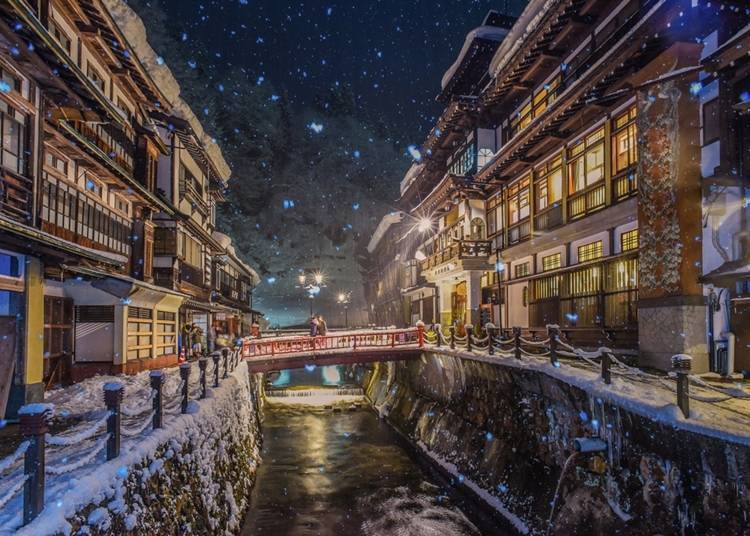
Yamagata is one of the snowiest regions of Japan, making it a winter paradise perfect for skiing and snowboarding.
Zao Onsen Ski Resort is one of the most popular ski resorts in Yamagata, and its sizable selection of natural hot springs will feel even more pleasurable amidst the subzero temperatures.
Ginzan Onsen likewise appears doubly beautiful when covered by a blanket of pristine white snow, making it a popular time to visitーso don’t wait around to book!
The snowiest areas of Yamagata tend to be northern inland Shinjo and Obanazawa, while snowfall is generally sparser along the coastline.
Snow can disrupt public transport, and make it unsafe to drive, so keep an eye on the weather report, and be prepared to hunker down. Hiking can also be dangerous in winter, and even smaller mountains like Yamadera will require special gear like crampons for safety.
Many routes of the Dewa Sanzan are also closed over winter and spring, so if this is on your itinerary, it’s best to visit during another time of year.
Spring (March-May)
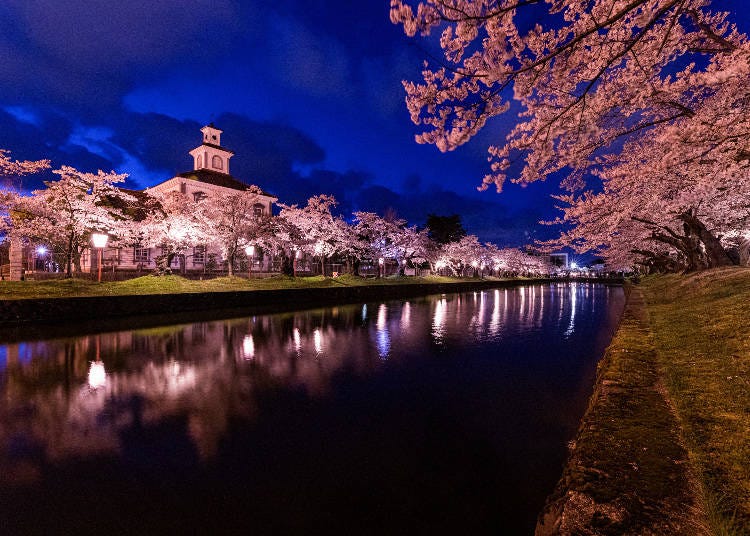
Spring is when Yamagata starts coming back to life after winter. However, being a frigid region, the weather remains chilly, and it will still often snow during the early months before gradually getting warmer from April.
Cherry blossoms will generally bloom across Yamagata from around mid-April to early May, presenting another opportunity for those who missed them or wish to see them again after they’ve fallen in Tokyo.
With an invigorating chill in the area, and less rain than other seasons, spring is an excellent time to get outdoors and explore the parks, forests, and bath in the open-air hot springs of Yamagata.
Summer (June-August)
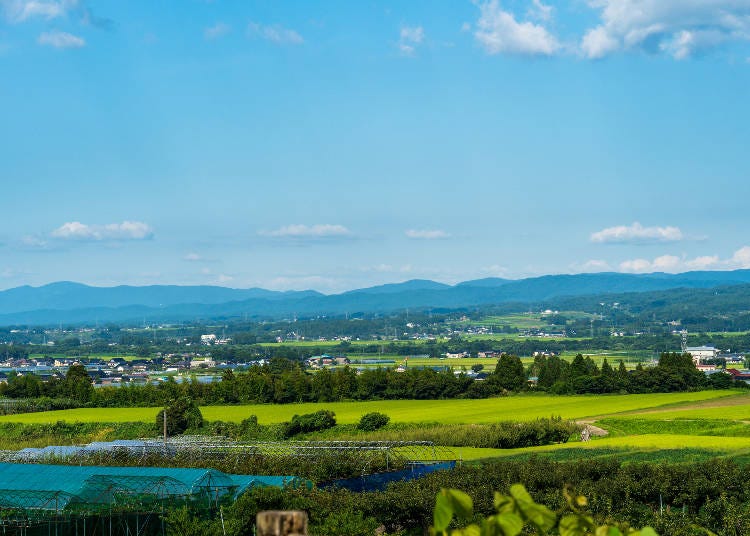
Yamagata becomes fairly hot by midsummer, with many days over 30°C and lots of sunshine. This makes it a good season to hit up the beaches of Yamagata’s coastline, or escape the heat in one of its cooler high-altitude areas, like Zao Onsen.
The rainy season hits Yamagata around mid-June, with the rain often peaking from July, so it’s best to avoid this time if you’re planning on doing lots of outdoor activities.
Festival Season
Summer is also the season of festivals in Japan, and Yamagata is no exception. The crux of this is the Yamagata Hanagasa Festival, which is held mostly in central Yamagata City over three days on August 5th-7th each year.
Autumn (September-November)
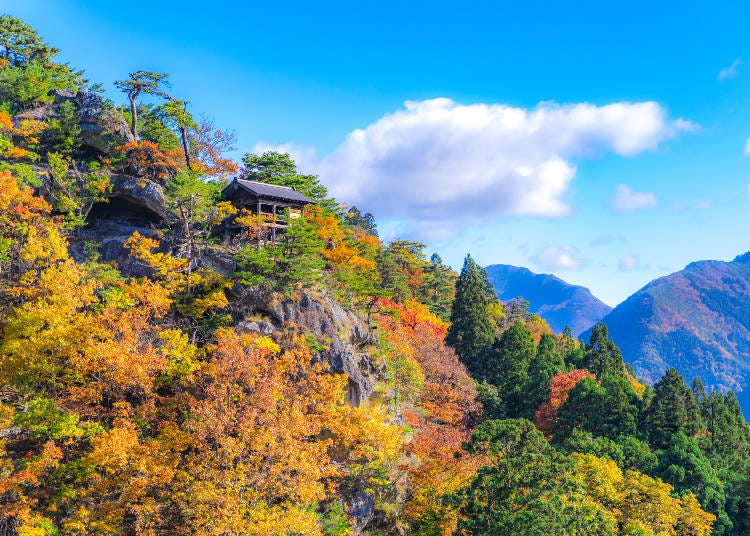
The heat of summer tends to die off quickly from September, and the first snowfall often appears in November.
Many typhoons make landfall in Japan around September, and while Yamagata is fairly protected, do keep an eye on the news.
Autumn foliage will appear from around mid-October in the high altitude areas, continuing down into the lowlands until late November.
However, the famous fall colors of Zao Onsen can be seen as early as late September.
- Winter: Even in the cities, you’ll need full winter gear to stay comfortable, including a down or puffer jacket, thermal underwear, gloves, scarf, thick socks, beanie, waterproof winter boots, and waterproof pants. You’ll likely be caught in the snow or rain at some point, so don’t underestimate the need for waterproof items, including a waterproof bag if possible. However, if you’re mostly sightseeing indoors, wearing a thick jacket that can be easily taken off and packed away will make your traveling smoother, as many facilities will be well heated. If you’re hiking outdoors, always prepare for the worst, and make sure you have quality hiking boots, crampons or microspikes, snow goggles, and first-aid and survival gear.
- Spring: If you’re traveling in March or early April, bringing the above winter gear is a safe bet, although there may not be as much need for waterproofing it. If you’re heading up to Zao Onsen or other high altitude areas, then you can basically expect winter weather. Later in the season, typical spring clothing like a sweater, pants, and beanie will do just fine. Rainfall is often on the lower side during spring, so an umbrella or rain jacket is generally unnecessary.
- Summer: The heat and humidity of summer makes it best to travel wearing light and breathable clothing, aided by sun protection gear like a hat and sunscreen. However, mountainous areas like Zao Onsen can get chilly at night, so having pants and a light jacket is also a good idea. If you’re visiting during the rainy season of late June or July, then definitely pack a rain jacket, umbrella, waterproof shoes, and a change of clothes.
- Autumn: While the residual heat of summer can last into September, the temperature will continue to drop as the days head towards winter, and the first snowfall of the season can appear as early as November. Those coming in September and October should dress for a mild, snowless winter, while November will require thicker cold weather clothing, particularly in the mountainous areas. Rainfall is also fairly frequent in September and October, so have an umbrella and rain jacket handy.
How do I get to Yamagata?
Accessing Yamagata from Tokyo is easy.
Simply take the Yamagata Shinkansen bullet train from Tokyo Station to reach Yonezawa (approx. 2 hrs) or Yamagata City (approx. 2.5 hrs) directly without need for changing lines.
- JR Pass for Whole Japan: Best if you intend to travel extensively around Japan.
- JR East Tohoku Area Pass: Best if you intend to travel around the Tohoku region.
- JR Tohoku-South Hokkaido Pass: Best if you intend to travel around the Tohoku region and southern Hokkaido.
Is it easy to get around Yamagata?
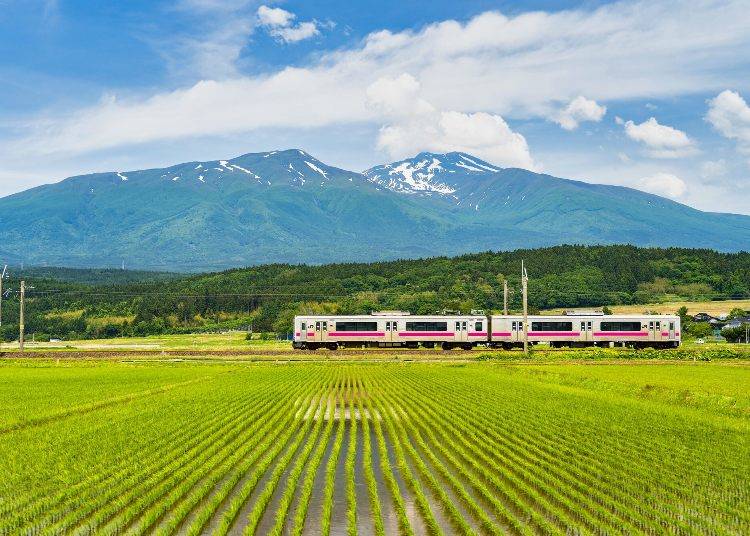
Touring Yamagata by public transport is possible, but services in rural areas can be infrequent, and it will take a lot of careful planning to get right. Yamagata City is fairly walkable, with highlights like Kajo Park just a brief stroll from the station, while places like Yamadera can be accessed with ease by train. However, most trips across Yamagata will require the use of buses, like Zao Onsen or Ginzan Onsen.
For those who want to get around smoothly, renting a car is the better option. Most of the roads connecting major tourist attractions, even remote ones, are well maintained, and Yamagata is free of large-size cities with confusing and busy streets like Tokyo. Rental cars can be picked up at several shops surrounding Yamagata Station and Yonezawa Station, letting you get on the road in no time. To be safe, it’s best to make your rental car reservations in advance.
Cities like Sakata and Tsuruoka are also accessible by express train direct from Niigata Station in neighboring Niigata Prefecture in around 2 hours, which is quicker than going from Yamagata Station.
For those traveling extensively around Yamagata and the greater Tohoku region, it may also be cheaper to purchase the JR EAST PASS (Tohoku area), which grants unlimited travel on bullet trains and other JR trains across Tohoku for 5 consecutive days for just 20,000 yen (adult). Unfortunately, this pass does not include Niigata City, so you’ll need to visit Sakata and Tsuruoka via another route, like from Shinjo.
Is it easy to travel around Yamagata with kids?

If you’re traveling through Yamagata by public transport, the long journeys and frequent changes on local trains/buses may not be suitable for younger children. However, if you rent a car, there are many convenience stores and stops with bathrooms along longer routes, so you shouldn’t have issues. Some hiking routes will be too difficult for children/teenagers, but most older children should be able to handle a visit to Yamadera and other routes suitable for beginners
Special Discount(Nippon Rent-A-Car)
Get 10% off when you book via the special site. (Coupon code: iUzM2RfVlJ)
Where should I stay in Yamagata?
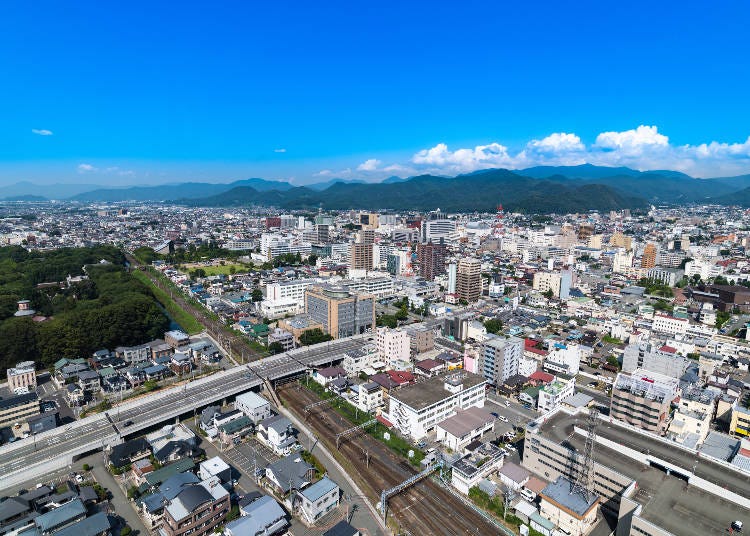
Cities in Yamagata are small, but most have comfortable, cheap hotels in the center near train stations. However, there is no main urban hub from which you can explore the entire prefecture, so it’s more convenient to move hotels as you make your way along.
There are dozens of hotels around Yamagata Station, which you can use as a base to explore the city and make a day trip out to Yamadera. There are also buses from Yamagata Station to Zao Onsen (taking about 40 minutes), making it doable on a day trip. However, many choose to spend the night at one of its inns to fully indulge in the hot springs, sights, and activities. Similarly, Ginzan Onsen is an hour’s drive from Yamagata City, but it’s beauty peaks at night when illuminated by lamps along the riverside, so we also recommend booking accommodation here to make the most of it.
Sakata and Tsuruoka have a decent number of hotels around their stations, but choices will be more limited compared to Yamagata City, so it’s smart to book as early as possible.
From here, you can make day trips out to spots like Dewa Sanzan, the Sankyo Soko Storehouses, Tsuruoka Park, Kamo Aquarium, and more.
What should I eat in Yamagata?
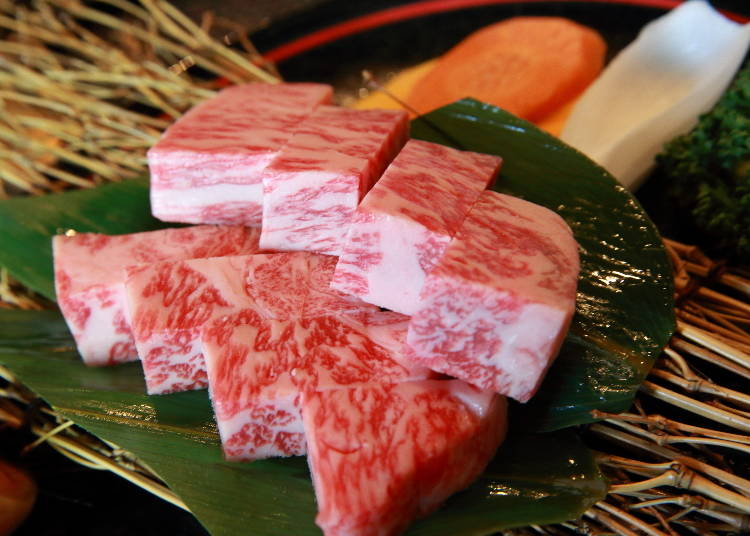
Yamagata has a great number of local delicacies to feast on, and is considered a treasure trove for produce. First and foremost, don’t leave without a helping of Yonezawa beef, which can be found on the menu at specialist restaurants all around Yonezawa City. Yonezawa beef is sourced from Japanese Black heifer cattle painstakingly raised under strict conditions on a high-quality feed of wheat and corn, yielding cuts with a remarkable balance between red meat and marbled fat. If you’re not planning on visiting Yonezawa, then you can also try “Yamagata beef,” which is beef of a similarly high quality found all throughout Yamagata Prefecture.
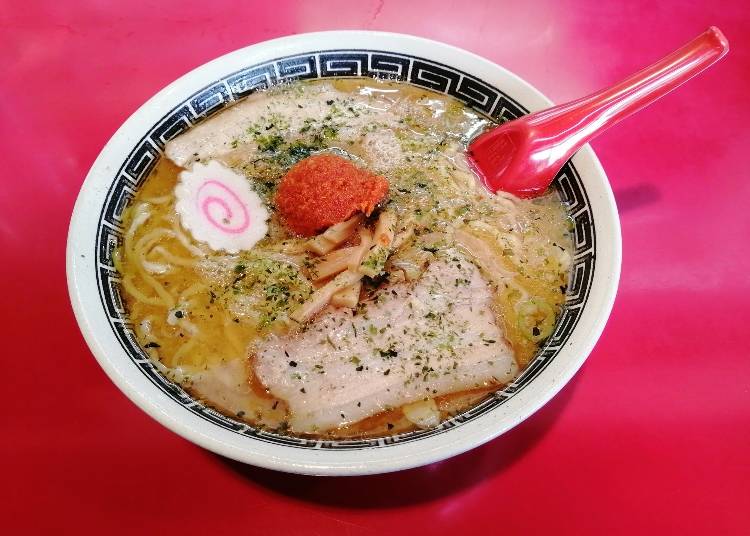
Ramen-lovers will also find a hoard of unique bowls to tuck into, including “Yonezawa ramen,” made with a light chicken and fish broth flavored by soy sauce and thin, wavy noodles; “hiyashi ramen,” which is a chilled ramen great for beating the summer heat; “torimotsu ramen,” found in Shinjo and noted for its use of chicken offal; “Akayu karamiso ramen” from Akayu, which features a spicy miso soup; and the seafood-based broth of “Sakata ramen,” which has the delightful addition of wontons.
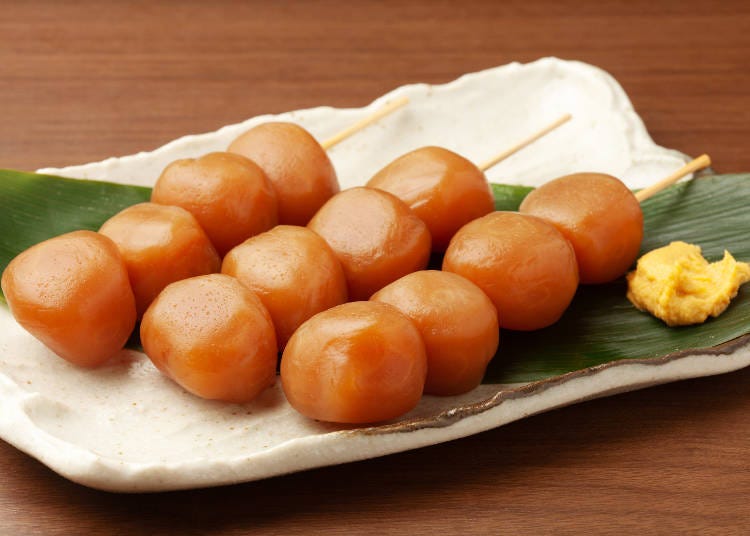
Speaking of Sakata, the Sakata Fish Market is a paradise for hungry tourists seeking their fill of fresh seafood, and is best experienced on a tour. Other staple foods in Yamagata include “tama konnyaku,” which are bite-sized balls made of “konnyaku” (konjac) marinated in a soy sauce-based dashi broth; as well as “imoni,” a hotpot dish centered around the “taro” root vegetable, usually eaten around autumn. When in Zao Onsen, make sure to visit a restaurant serving Zao Jingisukan, where you can chown down on tender lamb cut into chunky bites and cooked with vegetables on a uniquely-shaped cone-like grill.
Yamagata Prefecture is also Japan’s largest producer of cherries, which are in season from May until July. Tsuruoka is also famous for “dadacha-mame” edamame soybeans, available fresh between late June to September. Yamagata also has loads of snacks that can be taken home to share the local tastes with friends and family, such as the crunchy Oshidori Milk Cake bars, Sakuranbo Kirara (which features a whole cherry encased in jelly), and plenty more.
What souvenirs should I buy in Yamagata?
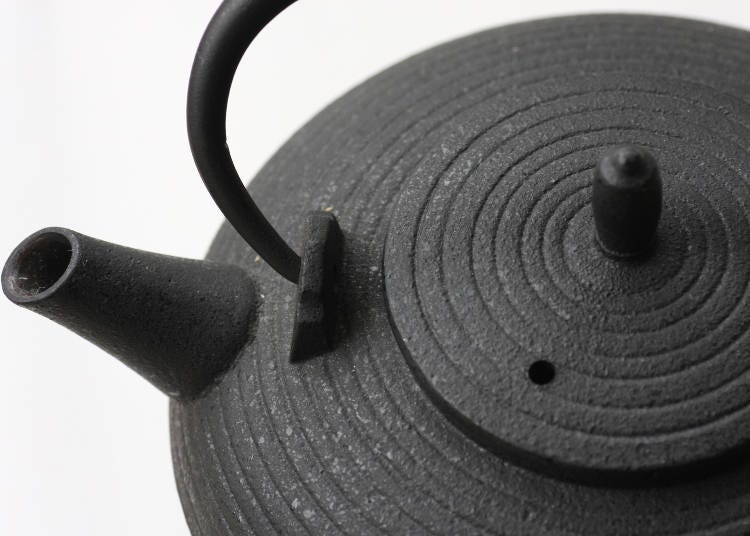
There’s no better souvenir of one’s time in Japan than an authentic traditional craft. Many of these crafts are deeply embedded in the locality, and have a history going back centuries. For Yamagata, the crux of this is Yamagata Cast Iron, which has been produced around Yamagata City since the Edo Period, and can be found as solemn, dignified yet surprisingly stylish teapots and more.
Another excellent traditional souvenir is the Tendo Shogi-koma, which are delicately crafted “koma” pieces for the game “shogi,” often called “Japanese chess.” They are handmade from high-quality wood, and adorned with Japanese characters painted with natural black lacquer. You can buy sets to use in the game, or large-sized ornamental pieces for interior decorations
Tips on visiting Yamagata
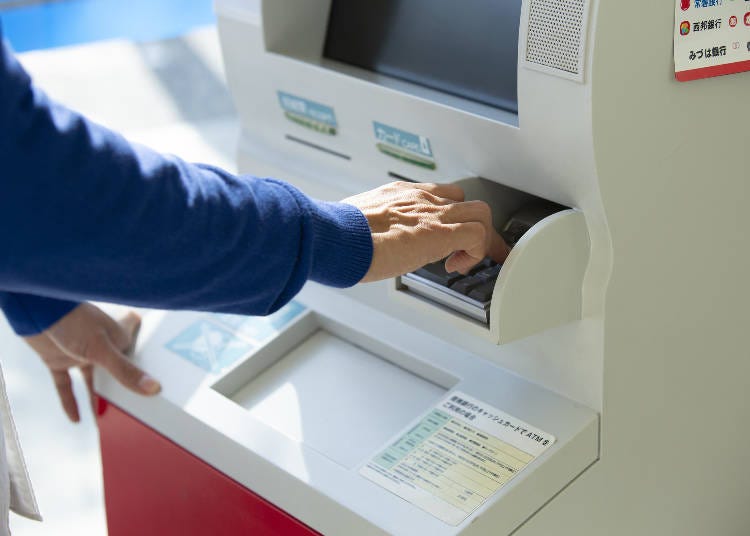
Is it easy to get money from ATMs in Yamagata?
Bank ATMS are generally a no-go, but convenience store ATMs should work for most international cards. Just be aware that some close outside business hours, so always keep at least 10,000 yen of cash on you at all times. Japan is still largely a cash-based society, and that is doubly true for its more rural regions like Yamagata.
Should I have a tour guide for Yamagata?
If you’re unable to drive and don’t have the time to deal with public transport, joining a Yamagata tour is a great way to see all the sights without stressing over itineraries. As Yamagata is a lesser-known destination, there aren’t as many tours in English as places like Tokyo and Kyoto, but you should still be able to find one.
Is Yamagata safe for travelers?
The biggest risk would be getting lost or injured while hiking, so always do your research before heading out, and bring enough gear and food to survive the night if you get stuck somewhere. Before going hiking, it's best to notify your hotel staff of where you will be going and approximately when you expect to return, just in case.
Can I visit Yamagata by myself?
Yes, Yamagata is a great destination for solo travelers. Just make sure to let someone else know your location when going on a hike.
Recommended day trips from Yamagata City
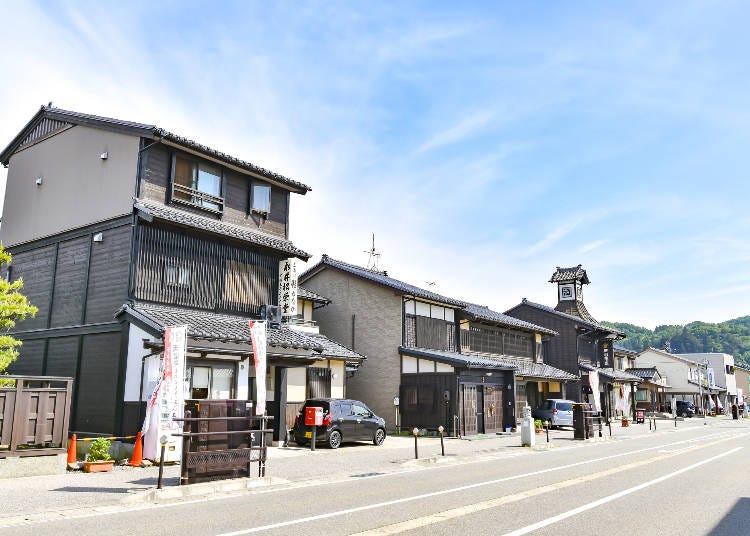
Murakami
Murakami is a quaint old-fashioned former castle town located in the north of Niigata Prefecture. It is famous for its salmon, which swim upstream into the city’s rivers around late November to early December.
Throughout the year, but during this time in particular, salted salmon are hung from the eaves and ceilings of houses to dry for eating.
The crux of this surreal scene can be enjoyed at Sennensake Kikkawa, where you can also purchase dried salted salmon products and more.
Murakami is also famous for its lacquerware, beachside hot springs, and traditional buildings.
You can reach Murakami on a day trip from Yamagata by taking an express train from Tsuruoka on the Uetsu Main Line, which will take about an hour.
Okama
Okama is a stunning emerald volcanic crater lake located on the Zao Mountains on the border of Yamagata and Miyagi Prefecture. It is popular with hikers, and can be reached by car from Yamagata City in around an hour. Keep in mind that roads leading to Okama are closed over winter.
Fukushima City
Fukushima City can be reached by bullet train from Yamagata City in just over an hour. While Fukushima City itself isn’t a major tourist attraction, there are a number of worthwhile sites like the Ogura-tei House, Fukushima Prefectural Museum of Art, and the Mt. Shinobu Observation Deck.
From Melbourne, Australia, Steve lives in Niigata City, two hours north-west of Tokyo. His passions include discovering local sake, dining at interesting restaurants and travelling as much of Japan as possible.
- Area
- Category
*Prices and options mentioned are subject to change.
*Unless stated otherwise, all prices include tax.
Popular Tours & Activitiess
Recommended places for you
-
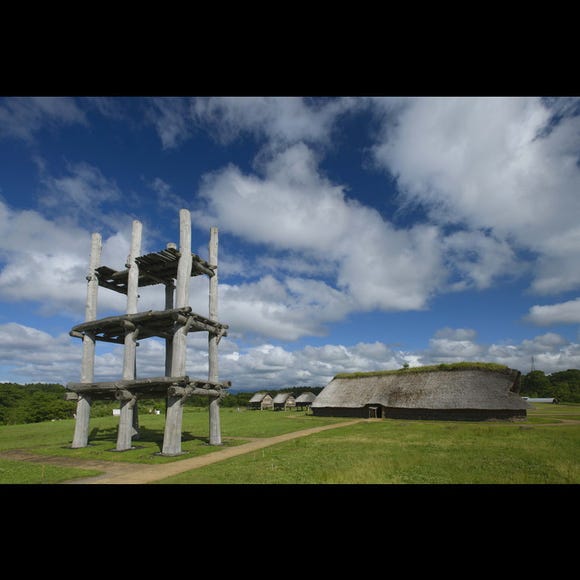
Sannai-Maruyama Site
Village Ruins
Aomori, Hirosaki And Hachinohe
-

Zuiganji Temple
Temples
Sendai And Matsushima
-

Aomori Museum of Art
Art Museums
Aomori, Hirosaki And Hachinohe
-
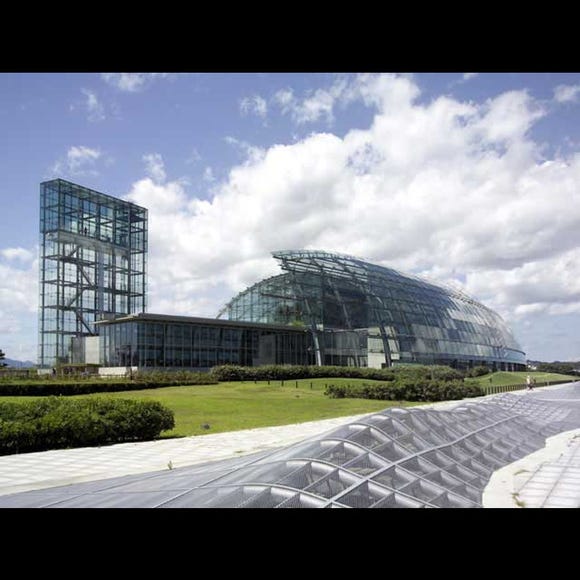
Aquamarine Fukushima
Zoos, Aquariums & Botanical Gardens
Fukushima, Koriyama And Iwaki
-

Hirosaki Park
Parks
Aomori, Hirosaki And Hachinohe
-
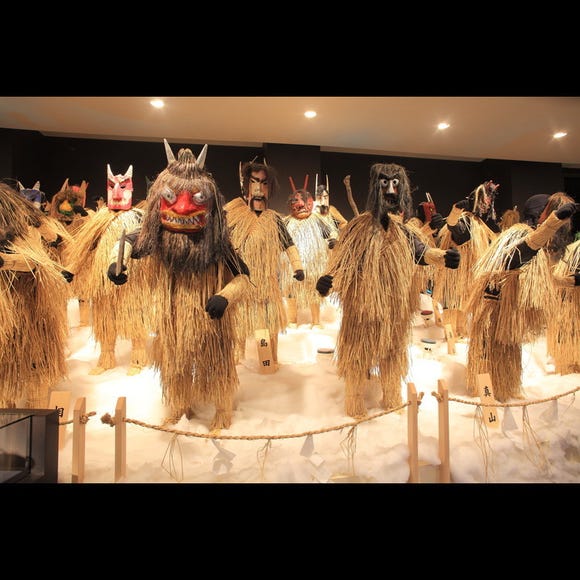
Namahage Museum
Other Museums
Surrounding Areas Of Akita
-

Dining in Yamagata: Must-Try Foods & Top Restaurants Near the Station
by: ShiroKu inc.
-
Ad

Why Fukushima is the Next Big Food Destination in Japan The Foodie Paradise Only 90 Minutes from Tokyo
-

Disney Meets Shinkansen: Two Themed Trains to Explore Japan's North and South in 2025
-

Shopping in Niigata: 9 Must-Buy Souvenirs & Local Sake to Take Home
by: ShiroKu inc.
-
Ad

Meet GU, UNIQLO’s Stylish Sister Brand! Fashion-Forward Clothing in the Latest Colors (Featuring Exclusive Coupon)
-
Ad

Just one stop from Haneda Airport! "Truly Japanese!" Food, Fun, and Knowledge Gather at HICityⓇ Enjoy An Electrifying Night at "Japan Night Fever: Haneda Innovation City"
by: Yohei Kato
-

18 Travel Secrets of Aomori Japan: Guide for Sightseeing, Shopping, and More
by: Guest Contributor
-

Your Trip to Niigata: The Complete Guide (Activities, Hotels, Savers & More)
-

Iizaka Onsen Guide: Japan's Gorgeous Hidden Hot Springs Town! (Access, Things to Do, Ryokan)
-
Ad

Revamped, Improved: We Try 'JR-EAST Train Reservation' & Are Surprised By Ease of Purchase, Pickup, Boarding
-

We Board Japan's 'Setsugekka' Resort Train And Have An Incredible Journey Through The Heartland
-

50% Off Shinkansen Tickets?! 'Osakini Tokudane Special' Has Been Extended – Now for Gran Class Too!















